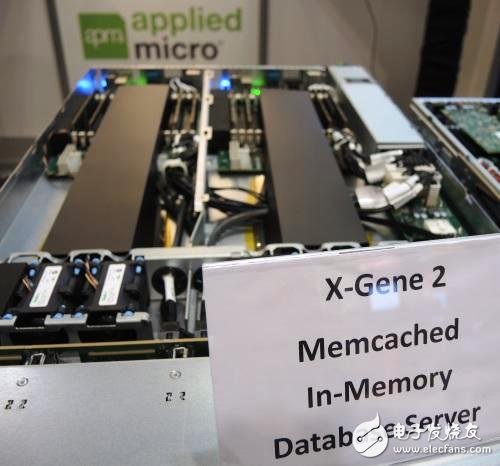Macom, the US electronic component maker, recently announced the acquisition of Applied Micro, a data center solution provider, and said it will sell the latter's X-Gene series ARM server business. Everything is clear; Applied has a stable large size in the US The data center business will further expand its bandwidth through 100~400G Ethernet networks by 2017 - not using ARM servers.
After the above news, I also heard that there are many reports that Broadcom is preparing to end Vulcan--a plan to build a powerful customized ARM core server SoC with FinFET technology; this high-risk product is expected to be because of Broadcom. Avago's acquisition and cancellation (a former engineer at Broadcom revealed that the company also canceled the development of a set-top box processor with a custom ARM core).
Another processor design designer, Cavium, pointed out that they are evaluating whether to buy the Applied X-Gene 3 and Broadcom's Vulcan IP; and he has already recruited several engineers from both teams. Cavium's ThunderX2 chip is highly anticipated in the ARM server space, but is expected to be in volume production by 2018.
A representative from Qualcomm pointed out that he had received some engineers' resumes from Broadcom and the Applied processor development team, but his company has decided not to acquire the ARM server IPs of the two companies; Qualcomm intends to I launched my own chip in a short time, and it has been released almost four years ago.
Few other companies continue to try to take a slice of the current Intel Xeon processor-driven server market. For example, Samsung has given up a long time ago, and Nvidia has already turned its attention to car processors. AMD turned its attention to the ARM server back to the x86 platform and graphics processor; Marvell's Armada chip appeared at the ARM Tech Con conference not long ago, but sources pointed out that the company has stopped developing the chip.
Chinese manufacturer Huawei has demonstrated ARM core server processors developed by HiSilicon, an IC design company, for internal use only; according to a February 2015 report, the Phosphor V660 Hip05 chip contains 32 The ARM Cortex-A57 core operates at 2.1GHz and features a 32 MByte L3 cache.

Macom said the company expects to sell Applied Micro's X-Gene family of ARM servers within 100 days, the latter showing the server SoC demonstrated at ARM Tech Con last month.
Since the end of 2011, Applied Micro has shown the X-Gene series chips with confidence in the ARM Tech Con for the first time. The industry has been long and hard to push the ARM architecture server. Unfortunately, the first generation of 32-bit chips Failure to gain market attention has also led to some early-stage startups such as Calxeda.
When 64-bit chips are finally available, software support is not yet mature, and organizations such as the Linaro Working Group are still working; but the question is who will use next-generation chips developed by companies such as Broadcom and Cavium.
Analyst Linley Gwennap believes that China's large data centers such as Alibaba, Baidu and Tencent may be the adopters of ARM servers, and some of these companies can manage experimental systems built for specific applications. Platform: "The ARM camp needs to find a foothold somewhere. Once you can use your hands and feet, you can start to develop like a snowball."
Qualcomm has been preparing to grab into China's large data center market through an ARM server chip design company established in partnership with the Guizhou Provincial Government of China. However, Qualcomm faces challenges from Chinese local players, including Huawei and the Hot Chips conference last August. The debut of the startup PhyTIum; AMD also announced the establishment of a server chip joint venture in China in April this year, but locked in the x86 architecture.
Steel poles are commonly used to carry several types of electric power lines, distribution lines and lighting system. Distribution lines carry power from local substations to customers. They generally carry voltages from 4.6 to 33kV for distances up to 30 miles, and include transformers to step the voltage down from the primary voltage to the lower secondary voltage used by the customer. A service drop carries this lower voltage to the customer's premises.
Telecommunication Mast, Telecommunication Antenna Mast,Telescopic Telecommunication Mast,Signal Telecommunication Mast
Yixing Steel Pole International Trading Co., Ltd , https://www.yx-steelpole.com